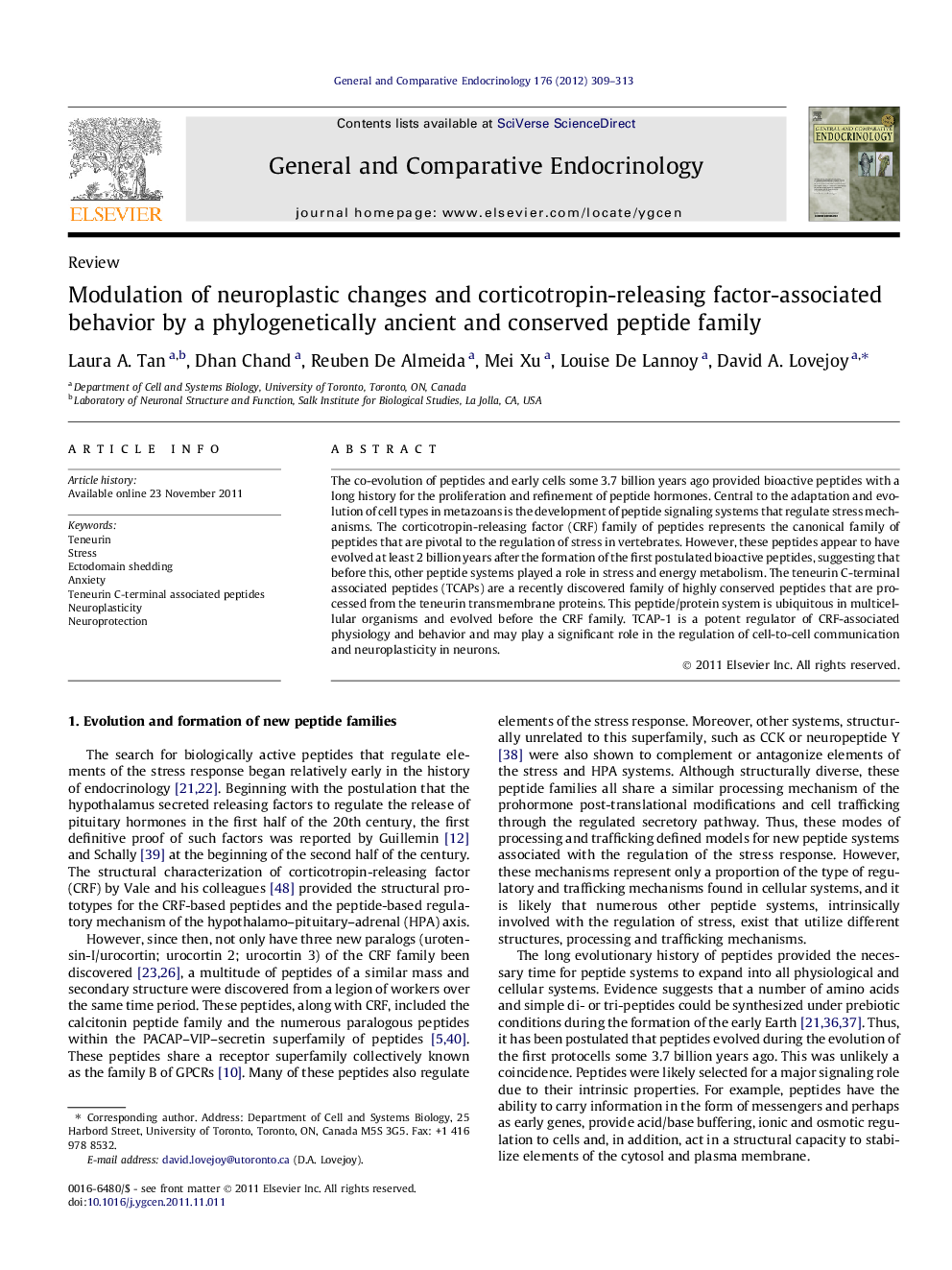| Article ID | Journal | Published Year | Pages | File Type |
|---|---|---|---|---|
| 2800570 | General and Comparative Endocrinology | 2012 | 5 Pages |
The co-evolution of peptides and early cells some 3.7 billion years ago provided bioactive peptides with a long history for the proliferation and refinement of peptide hormones. Central to the adaptation and evolution of cell types in metazoans is the development of peptide signaling systems that regulate stress mechanisms. The corticotropin-releasing factor (CRF) family of peptides represents the canonical family of peptides that are pivotal to the regulation of stress in vertebrates. However, these peptides appear to have evolved at least 2 billion years after the formation of the first postulated bioactive peptides, suggesting that before this, other peptide systems played a role in stress and energy metabolism. The teneurin C-terminal associated peptides (TCAPs) are a recently discovered family of highly conserved peptides that are processed from the teneurin transmembrane proteins. This peptide/protein system is ubiquitous in multicellular organisms and evolved before the CRF family. TCAP-1 is a potent regulator of CRF-associated physiology and behavior and may play a significant role in the regulation of cell-to-cell communication and neuroplasticity in neurons.
► A bioactive 41-residue peptide, called TCAP-1 is present at the carboxy terminus of teneurin-1. ► TCAP-1 modulates neuroplasticity by stimulating cytoskeletal reorganization. ► TCAP-1 is neuroprotective and modulates stress-associated behavior.
